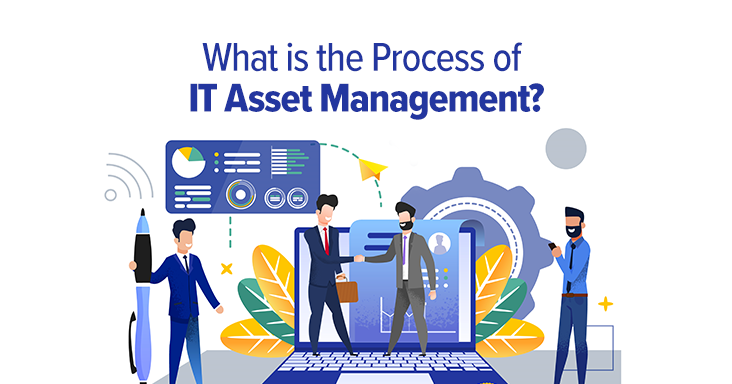What is the process of IT Asset management?
Strengthen visibility, reduce costs, and manage IT assets smarter with streamlined IT Asset Management services. Connect with our experts today!
14 +
Years of Experience
550 +
Happy Customers
250 +
Years of Tech Leadership Exp.

"License Reseller" and "Consulting & Implementation" Partner

TL;DR
- IT Asset Management tracks the full lifecycle of hardware and software to cut costs, reduce risks, and improve efficiency.
- Jira Service Management offers automated discovery, centralized tracking, lifecycle management, and compliance monitoring.
- DevTools supports ITAM adoption through assessment, tool integration, process optimization, and ongoing improvement.
- Effective ITAM strengthens security, ensures regulatory compliance, and enhances organizational decision-making.
Overview
In the present fast-moving digital world, proper management of IT assets is important for businesses despite their size. Its aim is to monitor, maintain, and optimize all an organization’s IT assets, including both hardware and software. By so doing, it helps reduce costs, improve operational efficiency, manage risks, and ensure regulatory compliance. Thus, this study delves into the role of IT Asset Management, the process involved, and how tools such as Jira service management (JSM) can effectively track down these assets. Similarly, we will also explore how DevTools can enable seamless integration of ITAM practices.
What is IT Asset Management?
IT Asset Management is a process that ensures an organization’s IT resources are followed up from purchase to disposal or recycling stage. It involves tracking all physical equipment and software applications owned by a firm for risk evaluation. In general terms of an organization’s approach towards information technology (IT), a key component is Information Technology Asset Management (ITAM), which provides total overall visibility into the life cycle & utilization of its products.
Why is IT Asset Management Important?
Effective ITAM has many reasons why it is important:
- Cost Control: Organizations can save a lot by tracking all their IT assets, thereby avoiding unnecessary purchases and making informed decisions on future investments.
- Risk Management: ITAM aids in identifying potential risks that are associated with IT assets, including software compliance issues, security vulnerabilities, and outdated hardware, thus allowing for proactive mitigation.
- Improved Efficiency: A well-done ITAM will also ensure that the organization’s assets are being utilized to their maximum capacity, with no redundancies, and that employees carry out tasks using the right tools.
- Regulatory Compliance: There are many industries that require detailed tracking and reporting of IT assets due to regulations. This keeps them in line with such regulations, saving them from lawsuits and fines.
- Enhanced Security: Tracking the whereabouts of your devices, among other things, will help you ensure that all devices have been updated with anti-virus patches. This reduces the chances of being hacked.
Process of IT Asset Management
The ITAM process can be broken down into several key stages:
- Planning and Identification: This stage involves determining the definition of ITAM, coming up with policies and procedures, and identifying all IT assets. It also includes the classification of the assets according to their type, usage, and relevance to the organization.
- Acquisition: At this level, one is obliged to procure IT assets. This step includes choosing vendors, negotiating contracts, and complying with organizational standards for procuring goods or services.
- Deployment: Another critical step when it comes to ITAM is deploying and configuring acquired IT assets. Thus, this aspect involves installing software packages within hardware devices that make up an organization’s ICT system.
- Maintenance: The other important phase in IT asset management is the upkeep of these resources, whereby regular updates, patches, and fixing of broken parts are done. Moreover, it means monitoring the performance and utilization of these resources to ensure they run smoothly.
- Tracking and Reporting: Continuously tracking information technology assets is vital for effective management. In addition, this entails having a centralized database that holds all asset-related details, including location and status. Hence, it generates reports for analyses in decision-making processes.
- Disposal: At the end of their useful lives, there should be a proper way of disposing of used information technology objects. This normally involves data erasure, recycling, and environmental regulatory compliance.
Best Tool for Tracking Assets: JSM

Jira Service Management (JSM) is a leading IT service management (ITSM) tool that provides robust capabilities for tracking and managing IT assets. It was developed by Atlassian and Jira Service Management and seamlessly integrates with other tools in the Atlassian suite to provide a complete solution for ITAM. Jira Service Management offers features such as automated asset discovery, comprehensive asset tracking, lifecycle management, and compliance monitoring.
Advantages
- One-Stop Resource Center: JSM centralizes all IT asset tracking on one platform, giving an individual source of verifiable asset data.
- Automaton: Numerous activities done during ITAD can be done automatically through JSM, cutting down on human labor and making it more efficient. These include automated detection of new items, updated and regular reports.
- Interconnectivity: Seamless information exchange is made possible by connecting JSM with a multitude of other software applications and systems, thus leading to comprehensive management of assets throughout the entire scope of the organization’s IT environment.
- Scalability: Regardless of whether it is a small business or a large corporation, JSM can scale up easily.
- Compliance and Protection: Compliance with industry regulations and ensuring that all information technology resource areas are secured and up-to-date through patches and updates are some reasons why people choose to use Jira Service Management.
How to Track Assets?
Tracking assets with JSM involves several steps:
- Discovery and Inventory: Use JSM’s automated discovery tools to identify and catalog all IT assets within the organization. This includes both hardware and software assets.
- Asset Classification: Classify assets according to type, utility, and urgency. This helps prioritize management efforts and ensure that critical assets receive the attention they need.
- Lifecycle Management: Track each asset’s complete lifecycle from acquisition to disposal. This involves monitoring its use, performance, and maintenance.
- Reporting and Analytics: Generate detailed reports on the status, utilization, and performance of an asset. Use these reports for decisions affecting asset management and optimization.
- Compliance Monitoring: Monitor compliance with software licenses, security policies, and industry regulations using JSM. This avoids legal problems and ensures proper management of all assets.
How Can DevTools Help You Implement IT Asset Management?
DevTools is a Platinum partner with a proven record of having implemented JSM’s ITAM features in many customer environments. Not only this, DevTools has positioned itself as a leading hub for Software Delivery & Maintenance Communities. DevTools is focused on helping firms embrace DevSecOps practices and tools to speed up their software development lifecycle. More recently, over the last few years. However, DevTools’ focus has also expanded towards Digital Transformation with DevSecOps.
Digitizing procedures and modernizing cooperation are the main aims of DevTools, which is focused on speeding up business transformation. DevTools has helped numerous large enterprise companies to reach their strategic goals faster and more efficiently using Agile consulting, Lean techniques, DevOps, and Enterprise Service Management. Also, the expertise of DevTools involves implementing Development Security Operations (DevSecOps) to improve team collaboration and reduce time-to-value.
Implementation of IT Asset Management
Implementing ITAM can be a complex process, but DevTools offers comprehensive support to ensure a smooth and successful implementation. Here’s how DevTools can help:
- Assessment/Planning: The first step taken by DevTools is to carry out a comprehensive assessment of the organization’s present IT asset management practices as well as infrastructure. After that, based on this evaluation, an implementation plan with all intricacies needed to be developed and customized in accordance with the specific needs and goals of an organization.
- Tool Selection/Integration: DevTools assists organizations in choosing the right tools for ITAM like JSM and guarantees their seamless integration into existing systems. This process comprises tool customization in conformity with organizational requirements as well as training of IT staff.
- Process Optimization: An efficient ITAM system can also be achieved through a close working relationship between an organization and DevTools. Consequently, policy-making and scripting are part of the optimization. In some cases, these terms could refer to any activities carried out without the involvement of people. This guarantees efficient management of assets and their effective use in line with good practice frameworks.
- Ongoing Support and Improvement: For this reason, DevTools offers continuous support so as to maintain the success of the ITAM implementation effort. These include regular reviews, updates, and improvements on ITAM processes and tools that will keep in touch with changing business dynamics and technological advancements.
- Compliance and Security: In order for an enterprise to become compliant with industry regulations or security standards related to its ITAM practices. It relies on DevTools, which ensures that such measures are put in place, like safeguarding against loss of sensitive data and managing such resources properly, among others.
Conclusion
One must undertake IT Asset Management (ITAM) for any company’s IT strategy; this improves cost savings, risk management, efficiency gains, legal compliance, and security enhancement. However, appropriate IT asset management is important for the entire time such assets are in use. Jira Service Management (JSM) is a tool that can help in tracking and managing IT resources.
DevTools deploys Agile, Lean, DevOps, and Enterprise Service Management methods to expedite the delivery of its consulting services on ITAM to its clients. It increases productivity through efficient ITAM practices while also driving the strategic decision-making capability of an organization and making it competitive.

Pramodh Kumar M is a Solutions Architect at DevTools with over 6 years of specialized experience in DevSecOps and enterprise IT solutions. He holds multiple advanced certifications, including Certified Kubernetes Security Specialist (CKS), GitHub Advanced Security, and Azure Solutions Architect Expert. Pramodh specializes in Agile, Cloud & DevOps toolchain implementations, with extensive hands-on experience helping enterprises with digital transformation initiatives. His expertise extends to ServiceNow implementation and support. He is passionate about sharing practical insights on Cloud, DevOps, Automation, and modern IT operations.




